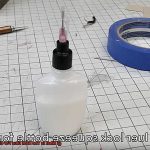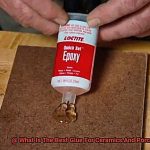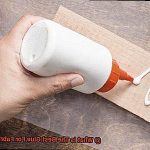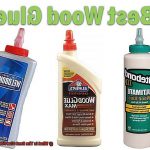Are you tired of wrestling with subpar glues that simply can’t handle the demands of your EVA projects? Do you find yourself wondering, “what is the best glue for EVA?” Look no further. This blog post has got you covered. Here, we’ll delve into the various types of adhesives suitable for EVA and pinpoint which ones reign supreme.
EVA (Ethylene Vinyl Acetate) is a versatile material used in a plethora of industries, from shoe manufacturing to toys and sports equipment. However, finding an adhesive that can properly bond with this material can be a real challenge. Using the wrong glue can lead to weak or discolored bonds, causing frustration and wasted time.
That’s why we’ve done the research for you and narrowed down the top options to consider. From super glues to hot melt adhesives, we’ll explore each adhesive’s advantages and disadvantages while providing helpful tips on how to make them work their magic.
So whether you’re a seasoned crafter or someone who values EVA’s durability, keep reading to discover the ideal glue for your next project. Get ready to take your crafting game up a notch and create long-lasting, high-quality pieces that will stand the test of time.
Understanding the Properties of EVA Foam
Contents
- 1 Understanding the Properties of EVA Foam
- 2 Choosing the Right Glue for EVA Foam
- 3 Contact Cement: A Popular Choice for Bonding EVA Foam
- 4 Cyanoacrylate Glue (Super Glue): An Effective Option for Bonding EVA Foam
- 5 Specialty Glues Designed Specifically for EVA Foam
- 6 Considerations When Choosing the Best Glue for EVA Foam
- 7 Advantages of Using the Right Type of Glue for EVA Foam
- 8 Disadvantages of Using the Wrong Type of Glue for EVA Foam
- 9 Conclusion
EVA foam is a remarkable material that has become a staple in various industries, including footwear, sports equipment, and automotive manufacturing. Its unique characteristics, including its lightweight, shock-absorbing, and durable properties, make it an ideal material for countless applications. However, to ensure a strong and long-lasting bond when bonding EVA foam together or to other materials, it is crucial to use appropriate adhesive.
One vital aspect to take into account when selecting an adhesive for EVA foam is the foam’s density. Low-density EVA foam is more porous and can absorb more adhesive, while high-density EVA foam has a smoother surface that may require a different type of glue to achieve a strong bond. Hence, understanding your EVA foam’s density will help you select the right adhesive.
Another crucial factor is the surface being bonded to. If the surface is smooth and non-porous, such as plastic or metal, a glue with strong bonding properties such as epoxy or cyanoacrylate (super glue) may be necessary. Conversely, if the surface is porous or textured, a more flexible adhesive such as polyurethane or contact cement may be a better choice.
Additionally, environmental conditions should also be taken into consideration. If the bond will be exposed to high temperatures or moisture, a waterproof or heat-resistant adhesive may be necessary. Similarly, if the bond will be exposed to UV light or other environmental factors, a UV-resistant adhesive may be required.
Various adhesives are suitable for bonding EVA foam together or to other materials. Contact cement is one of the most popular types because it creates a strong bond when two surfaces are pressed together. Cyanoacrylate glue, also known as super glue, dries quickly and forms an excellent bond between two surfaces but should be used sparingly. Specialty glues designed specifically for EVA foam are also available.
Choosing the Right Glue for EVA Foam
First and foremost, the type of EVA foam you are working with is crucial. With various densities, thicknesses, and textures available in the market, you must choose an adhesive that is compatible with your specific foam type. A low-density foam may require a less potent adhesive compared to a high-density foam. Therefore, it is vital to select an adhesive that can bond effectively with your specific type of foam.
The strength of the bond required is another critical factor that must be considered. Depending on your project’s needs, you may require a permanent or temporary bond. If you need a stronger bond, choose a more robust adhesive, and if you need a temporary fix, a weaker adhesive will do the job.
When it comes to aesthetics, it’s essential to choose an adhesive that dries clear. This factor is particularly important if you’re looking for clean edges or transparent finishes. Some adhesives tend to dry with a yellowish tint that can ruin the overall look of your project. To avoid this issue, choose an adhesive that dries clear.
Compatibility with other materials is also a crucial factor in choosing the right glue for EVA foam. If you need to bond EVA foam to metal or plastic surfaces, choose an adhesive that can bond both materials effectively.
Now that we’ve covered the essential factors let’s summarize them for easy reference:
- Type of Foam: Choose an adhesive compatible with your specific foam type.
- Bond Strength: Determine whether you need a permanent or temporary bond.
- Clear Drying: Choose an adhesive that dries clear for neat edges and transparent finishes.
- Compatibility: Ensure the glue bonds well with other materials used alongside EVA foam.
Contact Cement: A Popular Choice for Bonding EVA Foam
Contact cement is a top pick for bonding EVA foam due to its reliable and robust hold. This adhesive is made from neoprene and is applied to both surfaces that require bonding. Once the glue dries, the surfaces are joined together, creating a powerful bond that is difficult to break.
One of the benefits of using contact cement is that it creates a permanent bond that can withstand heat and moisture, making it an excellent choice for applications where EVA foam will be exposed to harsh conditions. Examples include automotive and marine industries. It is also useful for projects where the bond needs to be flexible, such as in costume making or shoe repair.
When using contact cement, it’s essential to apply the glue evenly to both surfaces and allow it to dry completely before joining them together. Failure to do so may result in a weaker bond. Additionally, contact cement should be used in a well-ventilated area to avoid inhaling harmful fumes.
To summarize, contact cement is a reliable and effective choice for bonding EVA foam. Its strong and long-lasting hold can withstand tough conditions, making it an extremely popular choice for both DIY projects and professional applications. Here are some additional reasons why contact cement is so frequently used:
- Contact cement creates a permanent bond that won’t fall apart over time
- It’s easy to apply and doesn’t require any special equipment
- This adhesive works well with different types of materials besides EVA foam
- It dries relatively quickly, allowing you to move on to the next step of your project sooner
Cyanoacrylate Glue (Super Glue): An Effective Option for Bonding EVA Foam
While contact cement may be the hero of adhesives, today we will explore the benefits and drawbacks of using cyanoacrylate glue or super glue for bonding EVA foam.

The advantages of using cyanoacrylate glue are many. This fast-drying adhesive creates a strong bond between EVA foam and other materials, making it a popular choice for crafting, cosplay, and DIY projects. Its quick-drying properties allow you to continue working on your project without waiting for the glue to dry. This feature is particularly helpful when working on time-sensitive projects that require speed and efficiency.
Another benefit of super glue is its ability to create a durable hold that can withstand stress and strain. It is perfect for projects that require strength and stability, such as armor or props. Furthermore, this versatile adhesive works well on other materials besides EVA foam.
However, there are some disadvantages to consider. One potential drawback is that cyanoacrylate glue can be brittle when dry, which means it may not be ideal for projects that require flexibility. If you need your EVA foam creation to be pliable, super glue may not be the best option.
Excessive use of this glue can also cause the foam to become stiff or even melt. Therefore, it is important to use it sparingly and with caution to avoid any damage to the foam. Additionally, it is essential to prepare the surface of the foam correctly by cleaning it thoroughly before applying the glue.
Specialty Glues Designed Specifically for EVA Foam
There are specialty glues designed specifically for EVA foam that will give you the strong and durable bond you need.
Contact cement is one of the most popular types of specialty glue for EVA foam. This adhesive creates a very strong bond when two surfaces are pressed together. What makes it ideal for use with EVA foam is that it dries quickly and creates a strong, flexible bond that can withstand bending and twisting.
If you need to perform small repairs or bond small pieces of EVA foam together, cyanoacrylate glue, also known as superglue, is the perfect option. It dries quickly and creates a strong bond, but may not be as flexible as contact cement.
For a quick and easy way to bond EVA foam together, hot glue is another popular option. Hot glue guns are easy to use and provide a quick fix. However, hot glue may not be as strong or durable as other types of specialty glues, so it may not be the best option for heavy-duty use.
Considerations When Choosing the Best Glue for EVA Foam

To create a sturdy and professional-looking project, choosing the right glue is just as important as selecting the perfect color or texture. But with so many options available, how do you know which glue is the best for your needs? Let’s dive into the considerations when choosing the best glue for EVA foam.
First and foremost, always choose a glue that is specifically designed for use with EVA foam. Using the wrong type of adhesive can result in a weak bond or even damage to your foam. Don’t take any chances – read the label carefully and confirm that the product is suitable for use with EVA foam.

Next up, consider the strength of the bond you need. If you’re creating a cosplay costume or prop that will be subjected to significant wear and tear, you’ll want a glue that can hold up under those conditions. Look for products that are known for their strength and durability. Some popular options include contact cement, hot glue, and epoxy.
Flexibility is another crucial factor to keep in mind. EVA foam is known for its stretchiness, so you’ll want a glue that can move with the foam without cracking or becoming brittle over time. Choose adhesives that are designed to be flexible and can withstand repeated bending and twisting without losing their grip. Some examples of flexible glues include silicone adhesive and urethane adhesive.
Ease of use is also an important consideration. Some glues require mixing or special application techniques, while others can be applied directly from the bottle. Depending on your level of experience with EVA foam and gluing in general, you may prefer a simpler or more complex product. If you’re new to working with EVA foam, consider starting with a basic adhesive like Aleene’s Original Tacky Glue or 3M Super 77 Multipurpose Adhesive.
Lastly, don’t forget about drying time. Some glues dry quickly, which can be helpful if you’re working on a tight deadline or need to move pieces into place quickly. Others may take longer to dry but offer stronger and more durable bonds once they have fully cured. Plan ahead and factor in drying time when working on your project.
Advantages of Using the Right Type of Glue for EVA Foam
The advantages of using the correct adhesive for EVA foam are numerous and can make a significant difference in the quality and durability of your finished creation.
Firstly, using the appropriate glue ensures a strong and secure bond. EVA foam is a lightweight material that can be prone to tearing or separating if not properly bonded. Choosing a high-quality adhesive specifically designed for EVA foam guarantees that your materials will be securely attached, preventing any potential damage or separation.
Another advantage of selecting the right type of glue for EVA foam is that it can save you time and money in the long run. A strong adhesive eliminates the need for frequent repairs or replacements, reducing overall costs and saving you valuable time. Additionally, using a glue that dries quickly can speed up your project timeline, allowing you to move on to other tasks sooner.
Using the appropriate adhesive also ensures that your finished project will look professional and polished. A weak or inconsistent bond can lead to unsightly gaps or uneven surfaces, detracting from the overall appearance of your work. By selecting the right glue, you can achieve a clean and seamless finish that showcases your skills and attention to detail.
When researching which adhesive to use for your EVA foam project, consider these factors:
- Durability: Make sure the glue you select has excellent bonding strength.
- Drying time: Choosing a glue that dries quickly will help speed up your project timeline.
- Consistency: You want a consistent bond throughout your creation.
- Appearance: You want an adhesive that will not detract from the overall appearance of your finished product.
Disadvantages of Using the Wrong Type of Glue for EVA Foam
Working with EVA foam can be a rewarding experience, but only if you choose the right glue. Using the wrong type of adhesive can lead to several disadvantages that can ruin your project and cause frustration. Let’s take a closer look at why using the wrong glue for EVA foam can be a costly mistake.
Firstly, using the wrong glue can lead to a messy and frustrating experience. The glue may not dry quickly enough, causing the foam to shift or move around before the bond is set. This can make it difficult to achieve precise and accurate results in your project. Furthermore, some types of glue may be too thick or too thin, making it tough to apply evenly.
Secondly, using the wrong type of glue can result in a weak bond that may not hold up under stress or strain. If you are creating a costume or prop piece that will be frequently used or worn, you need an adhesive that can withstand regular wear and tear. Using the wrong glue may cause your project to fall apart after only a few uses.
Thirdly, some types of glue can damage the foam’s surface, leaving behind unsightly marks or discoloration. This can make your project look unprofessional and lower its overall quality. It’s essential to use a glue that won’t damage the foam’s surface and leave unsightly marks.
Lastly, safety concerns arise when using adhesives that emit toxic fumes during the curing process. Not only can this be harmful if inhaled, but it’s also a potential fire hazard if not handled correctly. It’s crucial to choose a safe adhesive that won’t pose any health risks.
To avoid these potential disadvantages, it’s crucial to take the time to research and test different adhesives before starting your project. Consider factors like durability, drying time, consistency, and appearance to achieve a flawless finish that will make you proud. Using the right type of glue for your EVA foam project is essential to ensure a strong bond and long-lasting results. Don’t let the wrong choice of adhesive lead to frustration, disappointment, or even safety hazards.
ZbB2_pp24m8″ >
Conclusion
To create a robust bond with EVA foam, choosing the right adhesive is critical. With varying densities, textures, and environmental factors to consider, it can be challenging to determine the ideal glue for your project. However, by understanding the properties of EVA foam and considering factors like bond strength, clear drying, compatibility with other materials, and ease of use, you can narrow down your choices.
One popular choice for bonding EVA foam is contact cement due to its reliable hold that can withstand tough conditions. Another effective option is cyanoacrylate glue or super glue which creates a quick-drying bond that can handle stress and strain. Specialty glues designed specifically for EVA foam are also available.
Using the correct adhesive ensures a strong and secure bond that saves you time and money in the long run while giving your finished creation a professional look. In contrast, using the wrong type of glue can lead to weak bonds, messy applications, unsightly marks or discoloration on the foam’s surface, safety hazards from toxic fumes emitted during curing process among other disadvantages.
Therefore, take time to research and test different adhesives before starting your project to avoid any potential issues. By doing so, you will achieve flawless results that will make you proud of your work.






